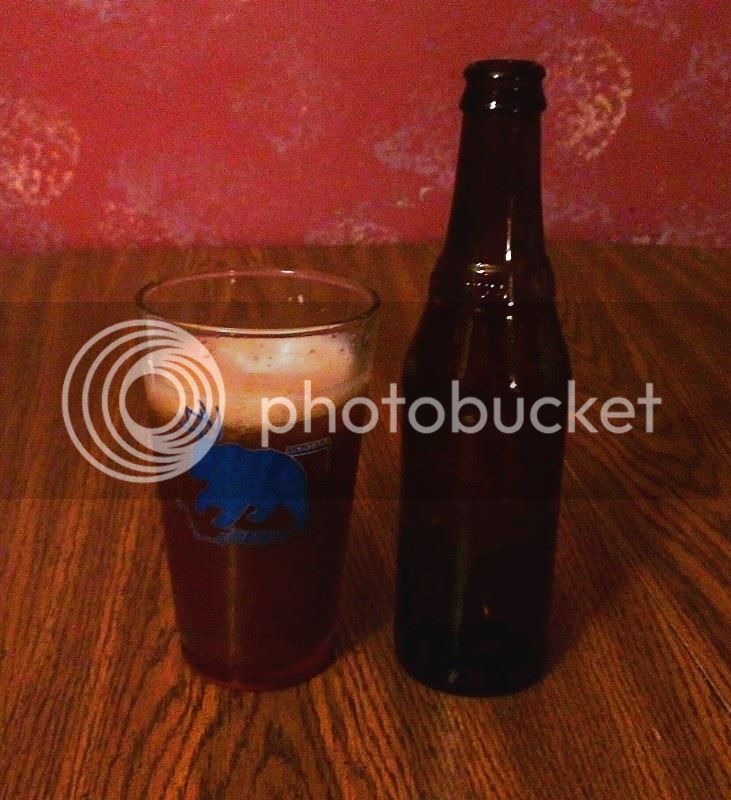TasunkaWitko
Well-Known Member
With bottling day coming up on my Kentucky Rye Brown Ale, I am looking forward to my next project, which will be two 1-gallon batches of Brooklyn Brew Shop's Smoked Wheat:
http://brooklynbrewshop.com/smoked-wheat-beer-making-mix
[ame]https://vimeo.com/52937676[/ame]
I gave my dad a package of this mix for Christmas, and his batch turned out very good - my favourite BBS variety so far. Even though I will be brewing from BBS's pre-packaged mixes, I do happen to have their recipe for this beer (written for both 1- and 5-gallon batches), and it is one that I intend to make much more of in the future.
I'm really looking forward to this one. Why? I'm not so sure. Possibly because I like wheat beers, and this looks to be an outstanding variation on the theme. Perhaps because I do a lot of smoking of barbecue, charcuterie etc., and I simply like the idea of almost anything being smoked. Or maybe it's because I am (mostly) German. In any case, it's my next project, and I can't wait to get it started.
This will also be the first time I will be brewing two batches (separately) at the same time, so I am very interested to see if the two batches come out exactly the same, or with any subtle differences. If there are any differences, I will not consider this a failure; rather, I will be most excited to find out what caused those differences, in order to pick up on some fundamentals. If one is better than the other - even a little bit - I'll be able to consult my notes and find out what made it better, and can incorporate that difference into my future brew days.
I will update this thread as I enter the project, and will keep a detailed record so as to have a journal of the project, and in the hopes that it might help anyone in the future who might give this a try. I'm still quite new at this home-brewing thing, but am loving the user-friendly, all-grain mixes from BBS. It would be great to hear from anyone who has made a smoked wheat beer in general, or BBS's version in particular. If you have any experience or wisdom to pass along, please feel free to do so.
More as it happens, etc. &c...
Ron
http://brooklynbrewshop.com/smoked-wheat-beer-making-mix
[ame]https://vimeo.com/52937676[/ame]
I gave my dad a package of this mix for Christmas, and his batch turned out very good - my favourite BBS variety so far. Even though I will be brewing from BBS's pre-packaged mixes, I do happen to have their recipe for this beer (written for both 1- and 5-gallon batches), and it is one that I intend to make much more of in the future.
I'm really looking forward to this one. Why? I'm not so sure. Possibly because I like wheat beers, and this looks to be an outstanding variation on the theme. Perhaps because I do a lot of smoking of barbecue, charcuterie etc., and I simply like the idea of almost anything being smoked. Or maybe it's because I am (mostly) German. In any case, it's my next project, and I can't wait to get it started.
This will also be the first time I will be brewing two batches (separately) at the same time, so I am very interested to see if the two batches come out exactly the same, or with any subtle differences. If there are any differences, I will not consider this a failure; rather, I will be most excited to find out what caused those differences, in order to pick up on some fundamentals. If one is better than the other - even a little bit - I'll be able to consult my notes and find out what made it better, and can incorporate that difference into my future brew days.
I will update this thread as I enter the project, and will keep a detailed record so as to have a journal of the project, and in the hopes that it might help anyone in the future who might give this a try. I'm still quite new at this home-brewing thing, but am loving the user-friendly, all-grain mixes from BBS. It would be great to hear from anyone who has made a smoked wheat beer in general, or BBS's version in particular. If you have any experience or wisdom to pass along, please feel free to do so.
More as it happens, etc. &c...
Ron












































![Craft A Brew - Safale S-04 Dry Yeast - Fermentis - English Ale Dry Yeast - For English and American Ales and Hard Apple Ciders - Ingredients for Home Brewing - Beer Making Supplies - [1 Pack]](https://m.media-amazon.com/images/I/41fVGNh6JfL._SL500_.jpg)















